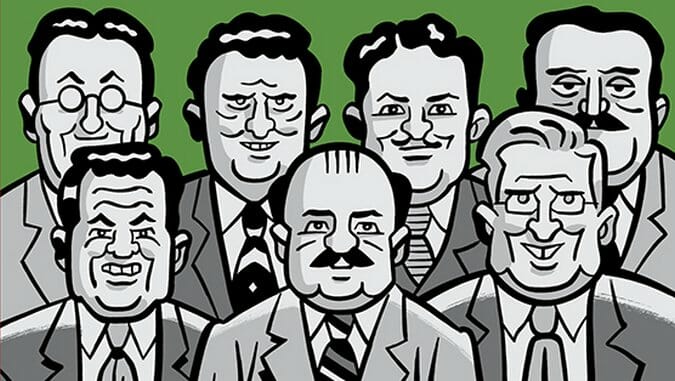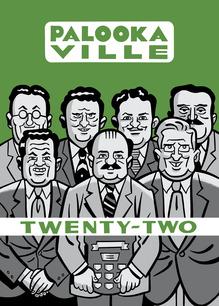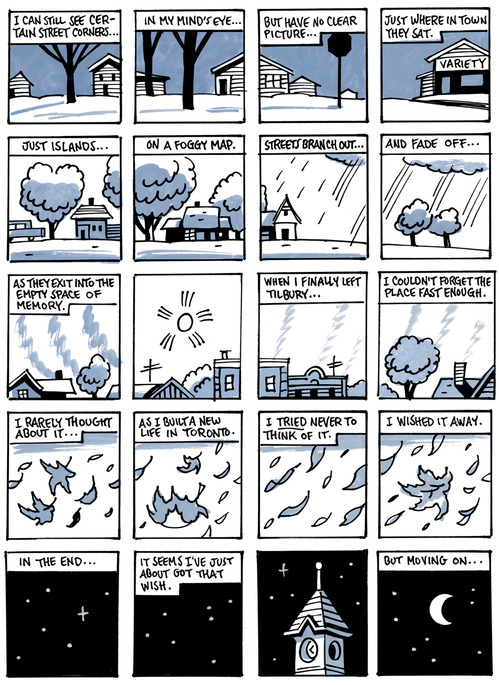Palookaville #22 by Seth

Writer/Artist: Seth
Publisher: Drawn & Quarterly
Release Date: April 21, 2015
Alternately aggravating and inspiring as a craftsman, Canadian cartoonist Seth isn’t getting any less like himself with age. This latest iteration of his occasional publication, Palookaville, offers three stories: the continuation of “Clyde Fans,” an ongoing narrative about the scions of a fan-company entrepreneur that’s been running since 1998; part two of “Nothing Lasts,” an autobiographical walk through the author’s hometown in Ontario; and a weird little photo essay and imagined history of an old-timey barbershop owned and run by Seth’s wife. (The latter also contains a small fold-out comic on barbering in the middle of it.)
As usual, the design remains superlative; the cover captures a portrait of the “Clyde Fans” characters rendered in matte halftones in front of a shiny metallic green that also forms the letters of the title. Green-and-white endpapers feature the crest that’s shown up in the same capacity in previous volumes, albeit with varying color schemes. Seth is nothing if not attentive to detail, to the point of anal retentiveness. That knife cuts both ways, though. The author exerts a level of control that can make a reader frustrated with panel after perfect-little-square panel, all featuring the repressed rage and sadness of Canadians and Canadiana. But there’s also something to be said for the irreplicable beauty those panels contain.
-

-

-

-

-

-

-

-

-

-

-

-

-

-

-

-

-

-

-

-

-

-

-

-

-

-

-

-

-

-

-

-

-

-

-

-

-

-

-

-












































